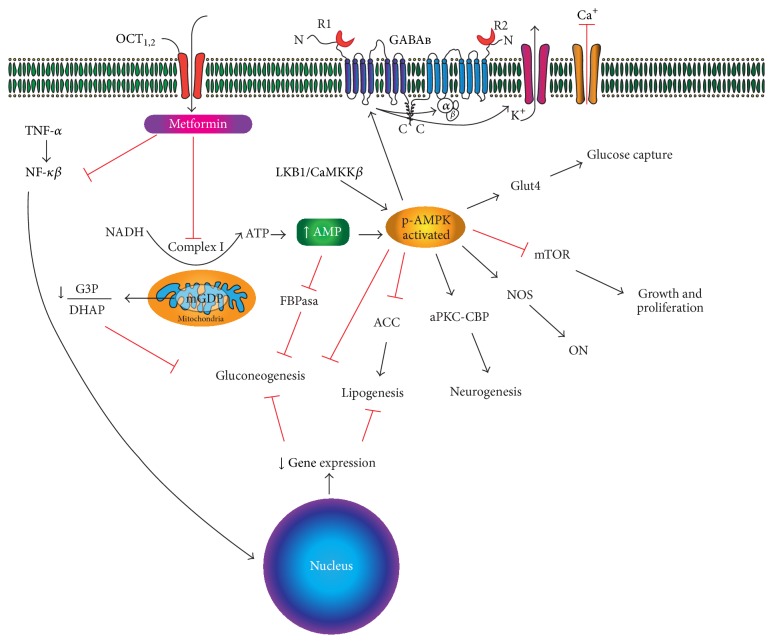Figure 1.
Different cellular pathways described for metformin function. Gluconeogenesis is inhibited due to changes in gene expression (such as for lipogenesis), FBPase inhibition, and changes in the ATP/AMP, G3P/DHAP, and lactate/pyruvate ratios. AMPK may exert different actions in neurons because they do not have glycolytic enzymes and, thus, a reduced ability to store nutrients and respond to energy deficit with a higher risk of lactic acidosis. The GABAB receptor is involved in the effects of metformin through inducing hyperpolarization secondary to K+ release and inhibition of Ca2+ entry secondary to AMPK activation. OCT: organic cation (proton) transporter. G3P: glycerol-3-phosphate. mGDP: mitochondrial glycerophosphate dehydrogenase. DHAP: dihydroxyacetone phosphate. eNOS: endothelial nitric oxide synthase. ON: nitric oxide. aPKC: atypical protein kinase C. CBP: CREB binding protein. NF-KB: nuclear factor kappa beta. TNF-α: tumor necrosis factor-alpha. FBPasa: fructose 1,6 bisphosphatase. ACC: acetyl CoA carboxylase. CaMKKβ: protein calmodulin-dependent kinase beta. mTOR: target of rapamycin in mammalian cells.

